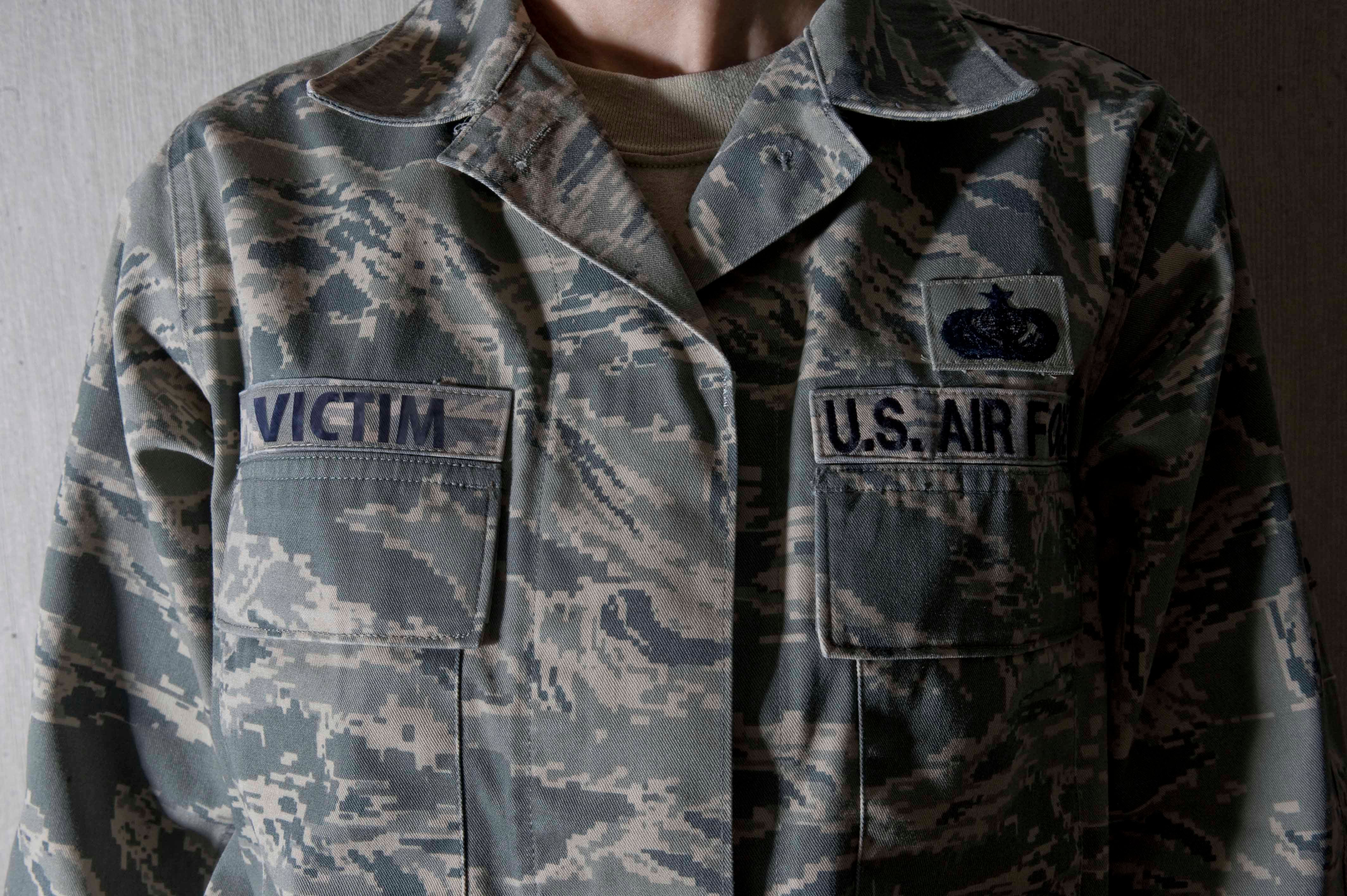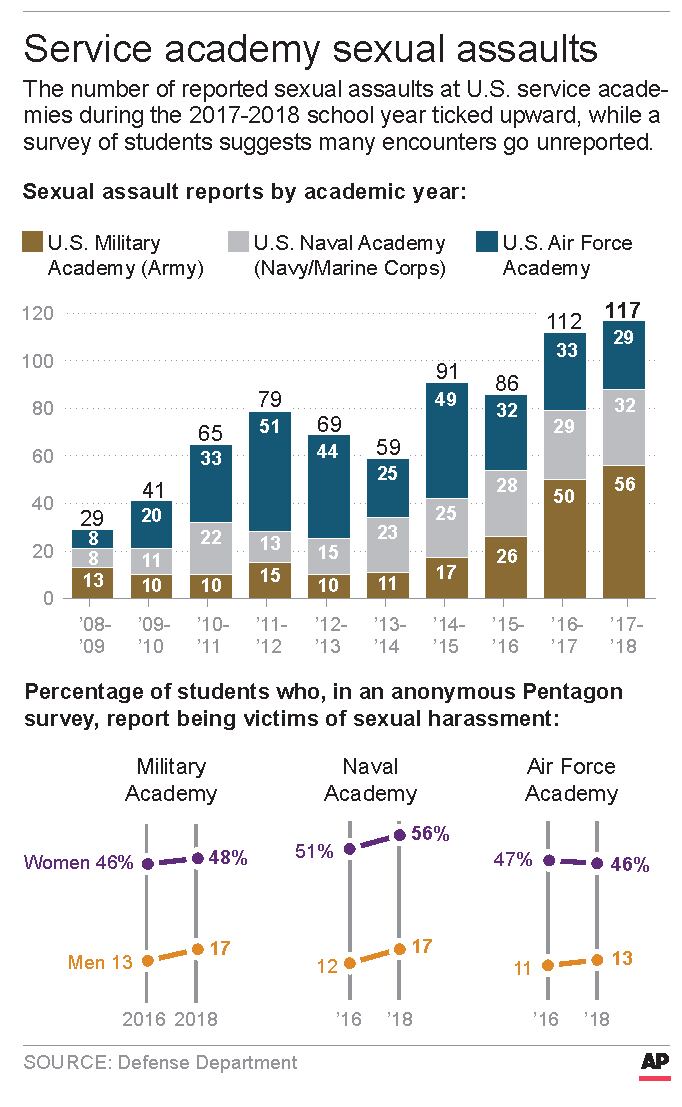The number of unwanted sexual encounters for cadets at the nation’s service academies has risen sharply in the last two years, the Defense Department said, which raises alarms that current efforts to create a safer atmosphere on those campuses have failed.
The estimated number of incidents of unwanted sexual contact rose from 507 across all service academies in 2016 to 747 in 2018, DoD’s Sexual Assault Prevention and Response Office reported Thursday. The study, undertaken every two years, is based on anonymous surveys submitted from each service academy.
RELATED

Unlike in previous years, DoD did not say that the increase was tied to an increase in reporting but instead a failure to solve the root culture causes, such as the prevalence of drinking off campus at all of the academies.
DoD’s prevention office has spent years trying to bring sexual assault numbers down, through awareness campaigns and outreach.
“Unfortunately the findings show that the rate of sexual misconduct at the academies has increased again,” said Elizabeth Van Winkle, director of DoD’s Office of Force Resiliency. “We find these results to be frustrating, disheartening and unacceptable.”
“Our approach must change,” Van Winkle said. “What we have done in the past has often brought about short-term results, but has not shown sustained progress. Therefore, we are looking at the entire life cycle of our cadets and midshipmen, from acceptance into the academy, to entry into the active force ... in order to select strategies with the greatest promise."
The largest estimated increase occurred at West Point, where 10.2 percent of female survey respondents reported unwanted sexual contact in 2016, versus 16.5 percent in 2018; and 1.4 percent of male survey respondents reported unwanted sexual contact in 2016 versus 3.4 percent in 2018.
In a statement, the Army said it was taking action and directing West Point leadership to report back within weeks on a plan of action to address the increase.
“This is not just about the Army staff and faculty at West Point,” the Army said. “We also expect more from cadets, who are our Army’s future leaders.”
Meanwhile, the U.S. Air Force Academy’s estimated number of assaults among women rose from 11.2 percent in 2016 to 15.1 percent in 2018, but among men the numbers largely held steady, going from 1.6 percent of male respondents in 2016 to 1.8 percent in 2018. At the U.S. Naval Academy, the number of estimated assaults among women rose from 14.5 percent in 2016 to 15.9 percent in 2018. Among men, it dropped from 2.1 percent in 2016 to 2.0 percent in 2018.
Read the report: Sexual Harassment and Violence at Service Academies, 2017-18

Tara Copp is a Pentagon correspondent for the Associated Press. She was previously Pentagon bureau chief for Sightline Media Group.




